Butterflies and Moths
Media
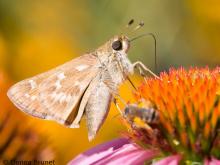
Species Types
Scientific Name
Atalopedes campestris
Description
Found statewide in grassy, open places, the sachem gets its name from the boldness of the males, which approach and chase away intruders — even people!
Media
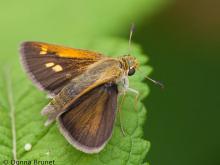
Species Types
Scientific Name
Polites themistocles
Description
Wide-ranging and common, the tawny-edged skipper can be seen May through October in a variety of grassy, open habitats.
Media

Species Types
Scientific Name
Pyrgus communis
Description
The white and black checkered pattern makes this a simple identification. The common checkered skipper is the only checkered skipper in Missouri.
Media
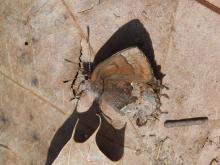
Species Types
Scientific Name
Callophrys henrici (formerly Incisalia henrici)
Description
Henry’s elfin is a small brown butterfly with splendid camouflage markings. It lives in and near open woodlands. The adults fly only in April and early May, when redbuds and wild plums are blooming.
Media

Species Types
Scientific Name
Libytheana carinent
Description
Most of us identify butterflies by their color patterns, but you can ID the American snout by its long “nose.”
Media

Species Types
Scientific Name
Junonia coenia
Description
The common buckeye is one of Missouri’s prettiest butterflies, but it doesn’t overwinter here. Instead, migrants arrive in late spring and early summer.
Media
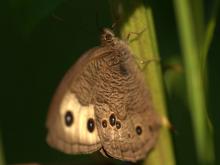
Species Types
Scientific Name
Cercyonis pegala
Description
Common wood nymphs vary by region. Some have a yellow area on the forewing containing two eyespots. Others may have the yellow area reduced to a yellow circle around each eyespot.
Media
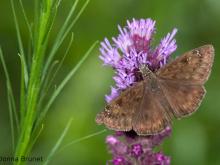
Species Types
Scientific Name
Erynnis horatius
Description
Look for Horace’s duskywing at flowers and mud puddles, in forests, and along roadsides.
Media
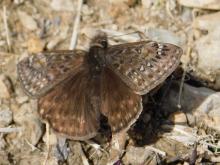
Species Types
Scientific Name
Erynnis juvenalis
Description
Juvenal’s duskywing is a spread-wing skipper that closely resembles Horace’s duskywing. Unlike Horace’s, it flies only in springtime and has two small telltale pale spots on the hindwing underside.
Media

Species Types
Scientific Name
Thorybes pylades
Description
A cloudywing is a spread-winged skipper whose ground color, seen from above, is completely dark, and not mottled. The northern cloudywing has a dark face, too.
See Also


Media

Species Types
Scientific Name
About 1,500 species in North America north of Mexico
Description
Adult caddisflies are mothlike. Their larvae are aquatic and build portable, protective cases out of local materials, including grains of sand, bits of leaves and twigs, and other debris.
Media

Species Types
Scientific Name
Corydalus cornutus
Description
Adult eastern dobsonflies are huge and mothlike, with large wings and a weak, fluttery flight. The fiercely predaceous aquatic larvae, called hellgrammites, are well-known to anglers, who often use them as bait.
About Butterflies and Moths in Missouri
Butterflies, skippers, and moths belong to an insect order called the Lepidoptera — the "scale-winged" insects. These living jewels have tiny, overlapping scales that cover their wings like shingles. The scales, whether muted or colorful, seem dusty if they rub off on your fingers. Many butterflies and moths are associated with particular types of food plants, which their caterpillars must eat in order to survive.





















